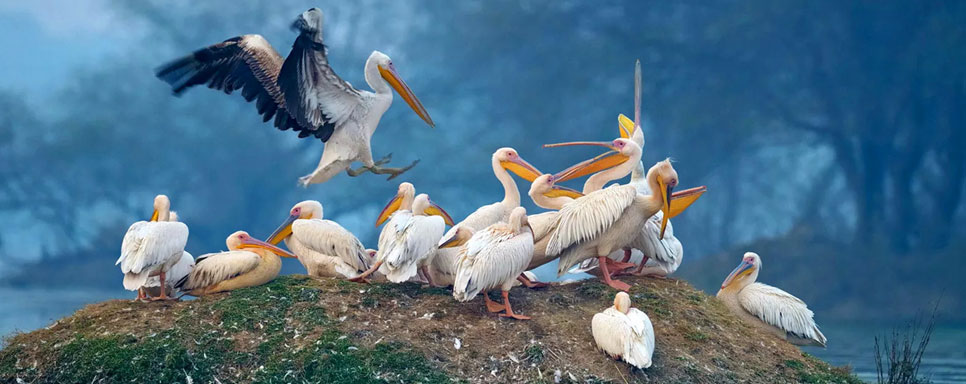History of Reintroduction of Rhinos at Dudhwa National Park

The reintroduction of rhinos at Dudhwa National Park is a fascinating story of preservation efforts to restore a species that once roamed freely in the region. Dudhwa National Park located in the Terai region of Uttar Pradesh, is renowned for its rich biodiversity including its diverse flora and fauna.
The history of rhino reintroduction at Dudhwa can be traced back to the mid-1980s when the Indian government along with various conservation organizations initiated efforts to bring back the rhinoceros population that had been decimated due to poaching and habitat loss. Rhinos, particularly the Indian rhinoceros (Rhinoceros unicornis) were once widespread across the Indian subcontinent but had faced severe declines in their populations.
To reintroduce rhinos to Dudhwa, several steps were taken:
• Habitat Restoration at Dudhwa National Park was successful. Before reintroducing rhinos, efforts were made to restore and protect their habitat within Dudhwa National Park. This involved measures such as anti-poaching patrols, habitat management and addressing human-wildlife conflict issues.
• Translocation idea was brought by the forest department Uttar Pradesh. The translocation of rhinos from other parks or reserves where their populations were relatively stable became a key strategy. Rhinos were sourced from other protected areas with healthy populations, such as Kaziranga National Park in Assam where Indian rhinos were relatively abundant.
• Preparation and Monitoring was done on a regular interval. Before translocation, extensive preparation and monitoring were carried out to ensure the safety and well-being of the rhinos. This included health assessments, ensuring adequate habitat availability, and tracking the rhinos post-release to monitor their movements and adaptation to their new environment.
• Community Engagement kept on high priority. Involving local communities in conservation efforts was crucial for the success of the reintroduction program. Community participation not only helped in mitigating human-wildlife conflict but also fostered a sense of ownership and stewardship of the rhino population among the locals.
• Continued preservation and protection efforts was made by the forest department. Reintroduction was just the beginning. Continuous conservation efforts, including habitat protection, anti-poaching measures, and monitoring of the rhino population, were essential for their long-term survival.
The reintroduction of rhinos at Dudhwa National Park has been largely successful, contributing to the recovery of the species in the region. It stands as a testament to the importance of collaborative conservation efforts in restoring endangered species and their habitats.
Spotting Rhino at Dudhwa National Park
Spotting a rhinoceros at Dudhwa National Park can be an exciting and rewarding experience due to the park's rich biodiversity.
• Always select the right time for sighting Rhino at Dudhwa National Park. Rhinos are most active during the cooler parts of the day, typically early morning or late afternoon. Plan your safari during these times for the best chance of spotting them.
• Opt a Jeep Safari to go deep inside the regions of Dudhwa Jungle. Dudhwa National Park offers safari experiences including jeep safaris and elephant safaris, which are ideal for wildlife viewing. Joining one of these guided tours with experienced naturalists increases your chances of spotting rhinos as they know the park well and can take you to areas where rhinos are commonly found. Dudhwa Safari Ticket can be obtained online from our website simply providing few important information. You can reserve confirm safari here only.
• Ask the nature guide to take you to visit Rhino hotspots made in the park. Dudhwa has specific areas where rhinos are commonly sighted. The grasslands and wetlands near riverbanks are prime rhino habitats. Ask your guide about these hotspots and focus your safari in those areas.
By following these tips and keeping a positive attitude, you increase your chances of spotting rhinos during your visit to Dudhwa National Park.